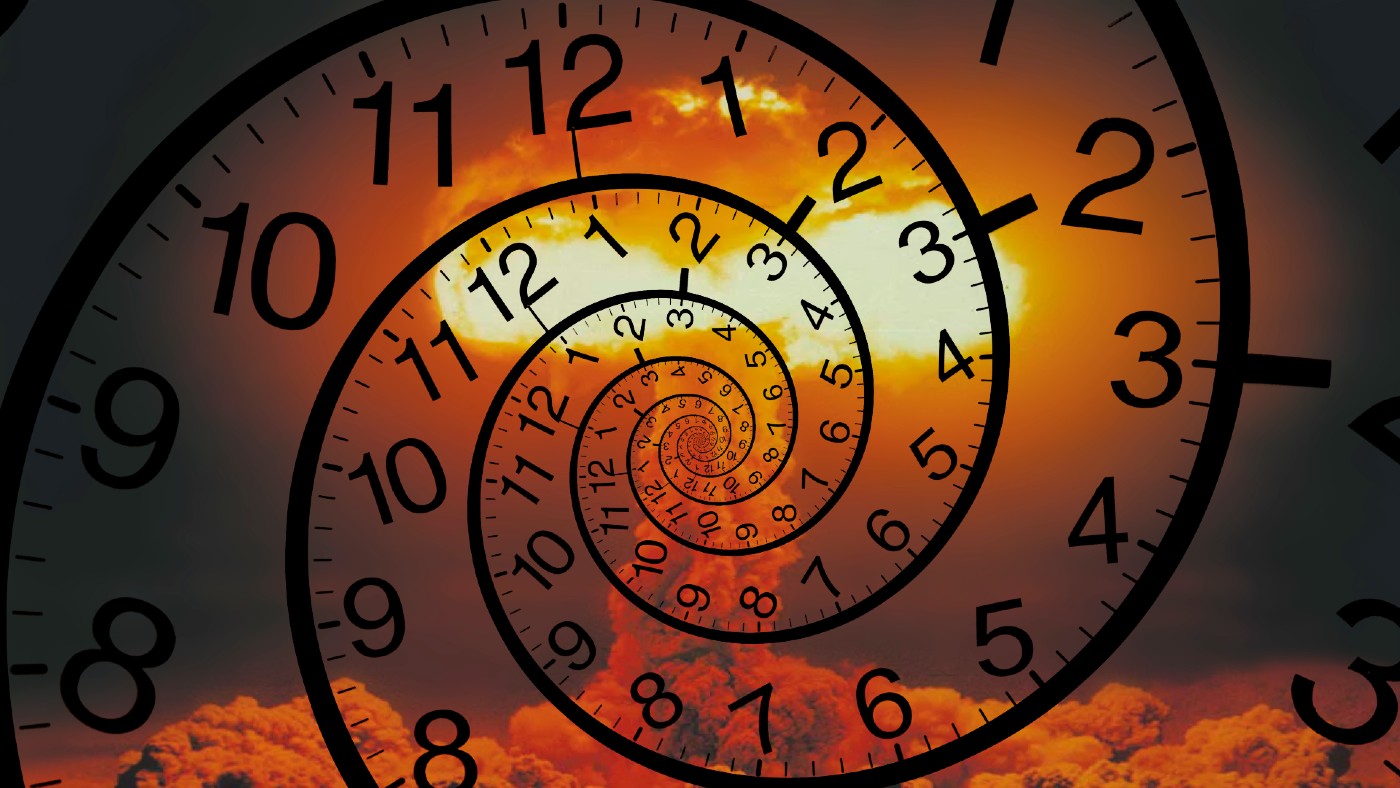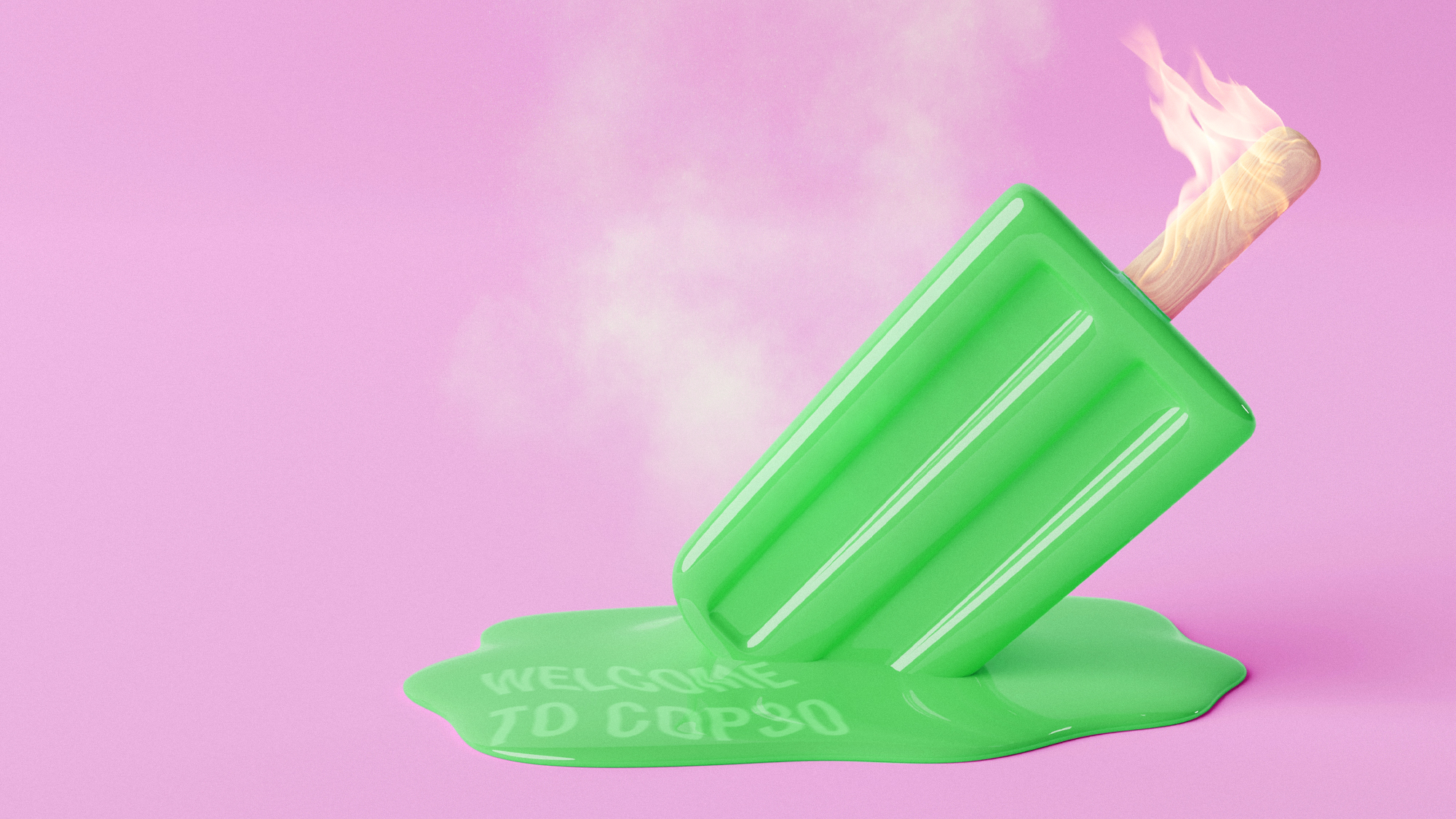What is the Doomsday Clock and what time is it set to now?
Metaphorical clock suggests world is closer to global catastrophe than ever before

The hands of the Doomsday Clock have lurched forward by ten seconds, reaching 90 seconds to midnight for the first time in history. This signifies that the world is the closest to global catastrophe since the metaphorical clock was first unveiled at the outset of the Cold War.
For the last two years, the clock’s minute hand had remained at 100 seconds to midnight, but this year the scientists behind the clock moved it forward largely because of “the mounting dangers of the war in Ukraine”.
Russia’s ongoing invasion has eroded “norms of international conduct” and the “possibility that the conflict could spin out of anyone’s control remains high”, explained the Bulletin of the Atomic Scientists’ science and security board, which curates the annual unveiling of the clock’s hands.
The Week
Escape your echo chamber. Get the facts behind the news, plus analysis from multiple perspectives.

Sign up for The Week's Free Newsletters
From our morning news briefing to a weekly Good News Newsletter, get the best of The Week delivered directly to your inbox.
From our morning news briefing to a weekly Good News Newsletter, get the best of The Week delivered directly to your inbox.
What is the Doomsday Clock?
The clock dates back to 1947 when physicists who had worked on the Manhattan Project, developing the world’s first atomic bombs, came up with the idea.
Originally it highlighted the fear that mankind would destroy itself through nuclear warfare - now it also symbolises the threat from climate change.
The notional clock is set to a certain number of minutes before midnight, counting down to world destruction. The board that maintains it meets twice a year to decide if Doomsday is any closer.
Who maintains the clock?
The Bulletin of the Atomic Scientists, now an online journal, is responsible for the clock. Founded as a print publication in Chicago, its original editors and contributors included scientists who had developed nuclear weapons and were horrified at the potential danger to humanity they represented.
A free daily email with the biggest news stories of the day – and the best features from TheWeek.com
The original setting of the clock was seven minutes to midnight, when it appeared on the cover of the Bulletin in 1947.
In 2007, the Bulletin formally began to consider climate change alongside nuclear threats in setting the clock, said the BBC. “The severity of these two risks, both in terms of their potential to cause global catastrophes and their likelihood of doing so, are undoubtedly comparable,” it explained.
Why has it moved forward?
Explaining their decision to move the clock forward by ten seconds, the team quoted UN Secretary-General Antonio Guterres, who warned in August that the world had entered “a time of nuclear danger not seen since the height of the Cold War”.
The time on the Doomsday Clock did not change in 2022 partly because Joe Biden had recently replaced Donald Trump as US president. “Last year’s leadership change in the United States” and “the return of science and evidence to US policy making in general” contributed to the decision to keep the clock’s hands in the same place, said the scientists at the time.
But the reading was revealed before Russia waged war in Ukraine, a conflict that moved the hand forward this year. Scientists also “pointed towards China’s considerable expansion of its nuclear capabilities”, North Korea’s enhancement of long-range missile testing, Iran’s “increasing capacity for the enrichment of uranium” and “India's development of its arsenal” as reasons for the change, said Sky News.
Other factors included “the climate crisis and carbon dioxide emissions, the increasing number of bio-threats like Covid-19, and disinformation and disruptive technology”.
The second-closest time to doomsday was in 2020, when scientists cited the risk of civil collapse from nuclear weapons, climate change and the rise of “cyber-enabled disinformation campaigns”, said The Guardian.
What about previous years?
The clock did not move in 2019, but its minute hand was set forward in 2018 by 30 seconds, making it two minutes to midnight. The experts cited war, climate change, major epidemics and new technologies as factors – but it was the existential threat of nuclear war that “outweighed all others”, said The Atlantic.
In 2017, the hands of the Doomsday Clock lurched forward by 30 seconds from three minutes to midnight to two-and-a-half minutes to midnight. The move was a reflection of then-President Donald Trump’s statements on climate change, his desire to boost the US’s nuclear capabilities and his spats with his own intelligence agencies, together with the damaging consequences of fake news.
The 2017 change marked the first time that the clock had moved by less than a minute, but the team decided to go for a 30-second change because Trump had only just started his administration.
Prior to 2020, the closest to midnight it had been was in 1953. That year, the clock was moved to two minutes to midnight in response to the US government’s decision to develop the hydrogen bomb, which was more deadly than any atom bomb.
The safest the world has ever been was apparently in 1991 when the Cold War ended and the clock retreated to 17 minutes to Doomsday.
-
 Political cartoons for January 4
Political cartoons for January 4Cartoons Sunday's political cartoons include a resolution to learn a new language, and new names in Hades and on battleships
-
 The ultimate films of 2025 by genre
The ultimate films of 2025 by genreThe Week Recommends From comedies to thrillers, documentaries to animations, 2025 featured some unforgettable film moments
-
 Political cartoons for January 3
Political cartoons for January 3Cartoons Saturday's political cartoons include citizen journalists, self-reflective AI, and Donald Trump's transparency
-
 The Alps start the countdown to ‘peak glacier extinction’
The Alps start the countdown to ‘peak glacier extinction’IN THE SPOTLIGHT Central Europe is losing ice faster than anywhere else on Earth. Global warming puts this already bad situation at risk of becoming even worse.
-
 How Bulgaria’s government fell amid mass protests
How Bulgaria’s government fell amid mass protestsThe Explainer The country’s prime minister resigned as part of the fallout
-
 Femicide: Italy’s newest crime
Femicide: Italy’s newest crimeThe Explainer Landmark law to criminalise murder of a woman as an ‘act of hatred’ or ‘subjugation’ but critics say Italy is still deeply patriarchal
-
 Brazil’s Bolsonaro behind bars after appeals run out
Brazil’s Bolsonaro behind bars after appeals run outSpeed Read He will serve 27 years in prison
-
 Americans traveling abroad face renewed criticism in the Trump era
Americans traveling abroad face renewed criticism in the Trump eraThe Explainer Some of Trump’s behavior has Americans being questioned
-
 Cop30: is the UN climate summit over before it begins?
Cop30: is the UN climate summit over before it begins?Today’s Big Question Trump administration will not send any high-level representatives, while most nations failed to submit updated plans for cutting greenhouse gas emissions
-
 Nigeria confused by Trump invasion threat
Nigeria confused by Trump invasion threatSpeed Read Trump has claimed the country is persecuting Christians
-
 Sanae Takaichi: Japan’s Iron Lady set to be the country’s first woman prime minister
Sanae Takaichi: Japan’s Iron Lady set to be the country’s first woman prime ministerIn the Spotlight Takaichi is a member of Japan’s conservative, nationalist Liberal Democratic Party